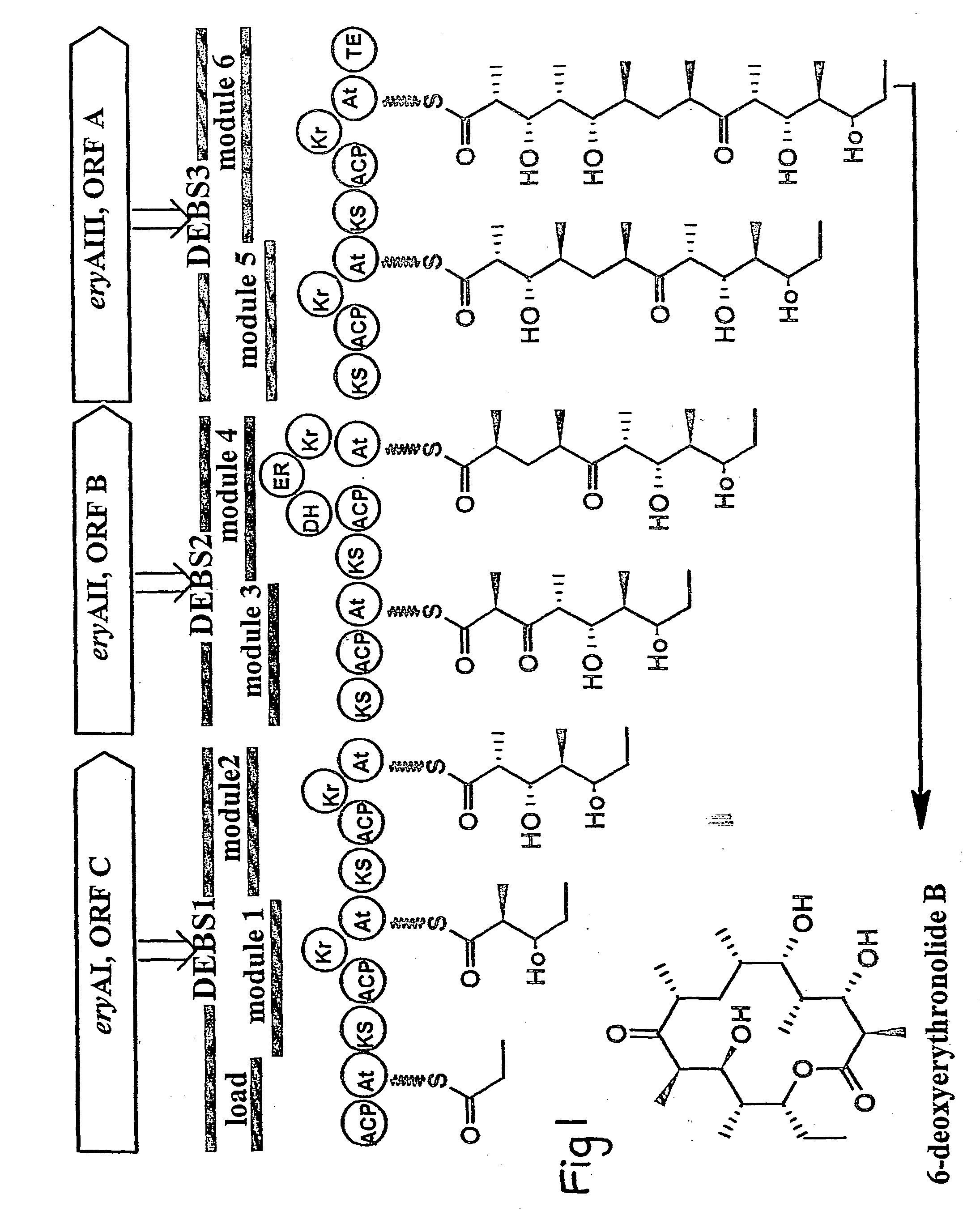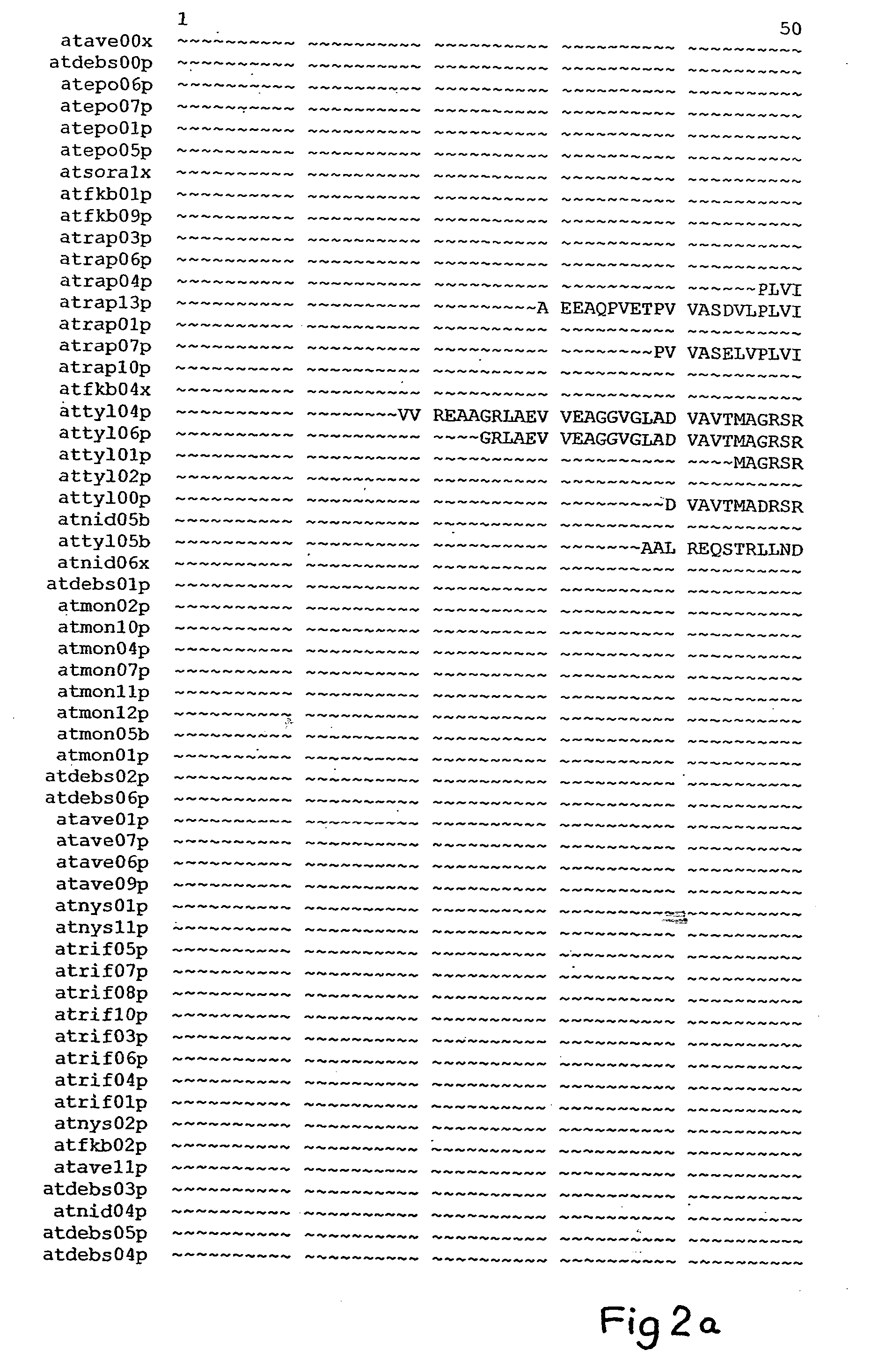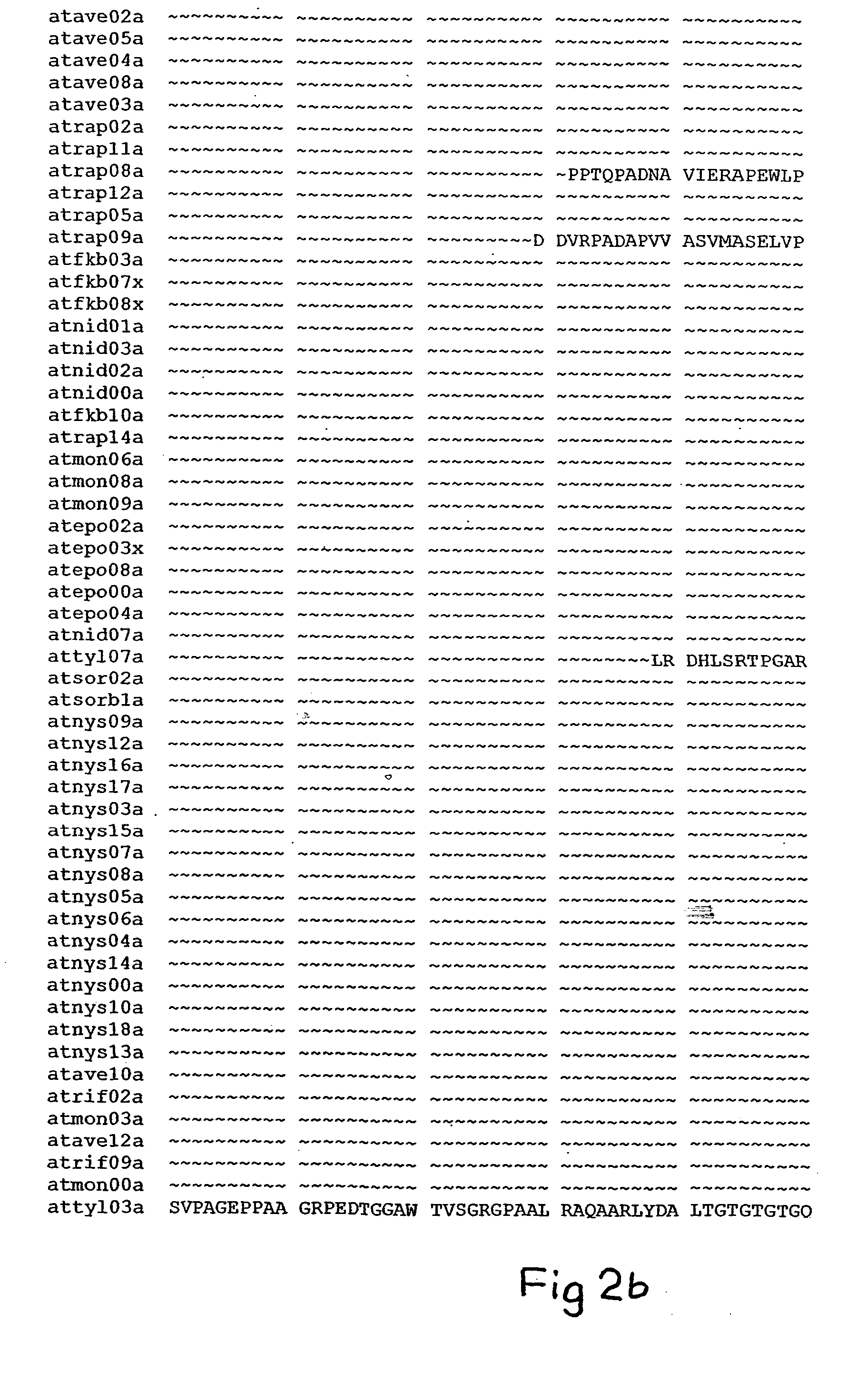Polyketides and their synthesis
a polyketide and polyketide technology, applied in foreign genetic material cells, sugar derivatives, enzymes, etc., can solve the problems of difficult to predict whether a particular heterologous domain will work in any given context, not work at all in an adjoining module, and difficult to achieve new polyketides by total chemical synthesis, so as to reduce the proportion of mixed polyketide products, increase the diversity of polyketide produced, and alter the substrate specificity of polyketide synthase
- Summary
- Abstract
- Description
- Claims
- Application Information
AI Technical Summary
Benefits of technology
Problems solved by technology
Method used
Image
Examples
example 2
[0064] Construction of S. erythraea NRRL2338 JC2 / pHP41 and Production of Triketides
[0065] S. erythraea NRRL2338 JC2 contains a deletion of the eryAI, eryAII and eryAIII apart from the TE (Rowe, C. J. et al. Gene 216, 215-223). Plasmid pHP41 was used to transform S. erythraea NRRL2338 JC2 protoplasts using the TE as a homology region. Thiostrepton resistant colonies were selected on R2T20 agar containing 40 .mu.g / ml thiostrepton. S. erythraea NRRL2338 JC2 (pHP41) was plated onto SM3 agar (see patent application WO 00 / 01827) containing 40 .mu.g / ml thiostrepton and allowed to grow for 11 days at 30.degree. C. Approximately 1 cm.sup.2 of the agar was homogenised and extracted with a mixture of 1.2 ml ethyl acetate and 20 .mu.l formic acid. The solvent was decanted and removed by evaporation and the residue dissolved in methanol and analysed by GC / MS. The major products were identified by comparison with authentic standards (Oliynyk, M. et al. Chem. Biol. (1996) 3:833-839) as triketide l...
example 3
[0066] Construction of S. erythraea NRRL2338 (pHP41) and Its Use to Produce 12-desmethyl Erythromycin B.
[0067] Plasmid pHP41 was used to transform S. erythraea NRRL2338 protoplasts. Thiostrepton resistant colonies were selected on R2T20 agar containing 40 .mu.g / ml thiostrepton. Several clones were tested for the presence of pHP41 integrated into the chromosome by Southern blot hybridisation of their genomic DNA with DIG labelled vector DNA. A clone with a correctly integrated copy of pHP41 was identified in this way. S. erythraea NRRL2338 (pHP41) was used to inoculate 5 ml TSB containing 5 .mu.g / ml thiostrepton. After three days growth 1.5 ml of this culture was used to inoculate 25 ml EryP media (see patent application WO 00 / 00500) containing 5 .mu.g / ml thiostrepton in a 250 ml flask. The flask was incubated at 30.degree. C., 250 rpm for 6 days. At this time the supernatant was adjusted to pH 9.0 with ammonia and extracted twice with an equal volume of ethyl acetate. The solvent wa...
example 4
[0068] Construction of Plasmid pHP048
[0069] Plasmid pHP048 is a pCJR24-based plasmid containing the DEBS1 PKS gene comprising a loading module, the first and second extension modules of DEBS1 and the chain terminating thioesterase. The motif YASH of the AT domain of first module has been altered to HASH. Plasmid pHP048 was constructed by several intermediate plasmids as follows.
[0070] A DNA segment of the eryAI gene from S. erythraea extending from nucleotide 41557 to nucleotide 41120 was amplified by PCR using the following oligonucleotide primers; 5'-CGGTGCCTAGGTGCACCGACTCCCAGTCC-3' and 5'-TTTTTCCAAGCGGCTGGCCGTGGACCACGCGTCGCACTCCTCGCACGTCGAGACGAT-3'. The DNA from plasmid pCJR65 was used a as template. The design of the primers introduced a AvrII site at nucleotide 41125 and the second extended to a BstXI site at nucleotide 41557, also mutated the amino acid sequence YASH (encoded by nucleotides 41537-41526) to HASH. The 442 bp PCR product was treated with T4 polynucleotide kinase ...
PUM
| Property | Measurement | Unit |
|---|---|---|
| pH | aaaaa | aaaaa |
| pH | aaaaa | aaaaa |
| structure | aaaaa | aaaaa |
Abstract
Description
Claims
Application Information
 Login to View More
Login to View More - R&D
- Intellectual Property
- Life Sciences
- Materials
- Tech Scout
- Unparalleled Data Quality
- Higher Quality Content
- 60% Fewer Hallucinations
Browse by: Latest US Patents, China's latest patents, Technical Efficacy Thesaurus, Application Domain, Technology Topic, Popular Technical Reports.
© 2025 PatSnap. All rights reserved.Legal|Privacy policy|Modern Slavery Act Transparency Statement|Sitemap|About US| Contact US: help@patsnap.com



